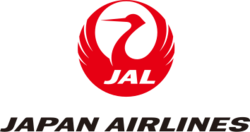When the pandemic hit, the global marketing team at Japan Airlines (JAL) saw its budget disappear overnight.
“It wasn’t just slashed,” said Minako Kent, a managing director at JAL. “We pretty much lost the whole thing.”
All that Kent and her team had to work with was roughly $1 million to meet contractual obligations with existing vendors and advertise the small number of routes that JAL operates between the US and Southeast Asia. As in, routes without any stops in Japan itself.
To be fair, there wasn’t much else to promote during the pandemic.
Although Japan reopened its borders in October, the country has been almost completely closed to nonresidents since April 2020. All tourism and flights ground to a halt.
Turbulence ahead
But wind back the clock to 2019, and Japan Airlines was rethinking its entire approach to marketing.
The airline’s plan was to streamline its global marketing efforts across regions, develop a more integrated approach to marketing, introduce new marketing-related skill sets and break down internal department silos.
Kent joined Japan Airlines in 2019 from EightBar, a unified Ogilvy/GroupM team dedicated to IBM’s business, as part of the revamp, and her hire signified a major change for JAL.
Rather than hiring people based on experience, JAL’s habit had been to hire a new crop of graduates every year and train them as generalists across the organization in rotations that could last from three to five years. Titles and salaries would be assigned based on the results of promotion exams.
Kent was the first Japanese hire in the company’s history to be brought on outside of this prescriptive system.
She got to work right away devising an omnichannel marketing strategy that included a combined focus on branding, performance and online sales. JAL started spending more on brand advertising in overseas markets, which is something the company hadn’t done before either.
And then … the pandemic hit.
Japan’s borders closed shortly thereafter, and Kent and her new team were at a loose end.
“We were kind of like … what do we do now?” Kent said. “But there was actually a lot of work we could still do.”
Refueling
Although Kent and her team were hamstrung in certain ways, they took advantage of the downtime to get JAL’s global marketing house in order and prepare for the day when Japan opened up again.
“We needed a foundation for our marketing structure, we needed to think more about data and platforms – and none of that was there, so that’s what we focused on,” Kent said.
One of the first things they did was to fix JAL’s on-site experience so when people search for flights from outside of Japan they’re taken to the appropriate page, which wasn’t happening before. JAL also started partnering with Conductor to help with SEO.
But the other top priority was to round out a martech stack that could support a global marketing org.
JAL started using multiple modules within the Salesforce Marketing Cloud, including email studio, journey builder for lifecycle marketing and audience studio to collect and consolidate first-party data from paid and organic site visits. JAL now uses Nielsen’s Visual IQ for marketing intelligence and marketing mix modeling and Adobe Experience Manager for web content management.
Japan Airlines also struck a partnership with EveryMundo, a fare marketing platform for airlines, which helps keep ticket prices up to date when promos are displayed in its content marketing.
Executive lounge
And while all of that was going on in the background, Kent also reevaluated JAL’s agency relationships, which numbered more than 30 across international markets.
An “overhaul was inevitable,” Kent said.
Today, JAL is mostly centralized with WPP-owned Mindshare overseas, Ogilvy in Southeast Asia and Dentsu domestically in Japan.
 Consolidating its agency roster helped JAL save money, but also brought order to chaos on the branding front.
Consolidating its agency roster helped JAL save money, but also brought order to chaos on the branding front.
“Before, our brand strategy was all over the place, because there were different agencies and therefore different messaging in each country,” Kent said. “But now we can actually nail down the communication funnel and have a consistent branding and creative strategy across regions.”
Ready for takeoff
Having reshaped JAL’s martech and agency infrastructure over the course of two years, Kent was ready to put it to work.
During the pandemic, Japan Airlines had no money committed to branding. The meager budget it did have went to performance marketing.
But that changed in October, when Japan Airlines launched a global omnichannel marketing campaign to coincide with the end of border restrictions, which were lifted on October 11. Airlines have now resumed international flights to and from Japan.
The “Where Dreams Go” campaign, which will run until the end of the year, is live in 19 different markets, including the US, Canada, Australia, France, Germany, Singapore, Hong Kong, India and Italy.
JAL is running paid media across programmatic, CTV, video, social media and out-of-home. It created a landing page on its site with an in-depth “Guide to Japan,” as well as vacation packages and tips for planning a trip.
The goal of the campaign is to sell plane tickets, of course, and demand has been extremely high, up more than 1,000% since the borders opened, albeit from a base of near zero. But Kent is also looking to generate awareness outside of Japan.
“I’m a firm believer that brand presence correlates with market share,” said Kent, who was recently promoted to managing director from senior director of corporate brand strategy and global marketing.
And now that the groundwork is laid – and Kent’s team has a budget again – the sky’s the limit. (As if you were going to get through an article about the airline industry without a “sky’s the limit” reference.)
“For two whole years, our team has been toiling in the background over what some might think of as the less exciting stuff,” Kent said. “But now we get to use what we built, we get to see results, we’re finally able to do real marketing – and it feels good.”
















